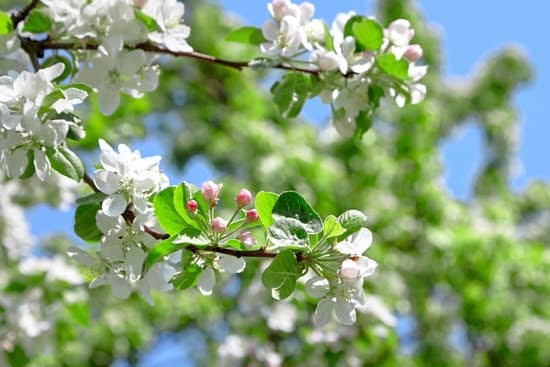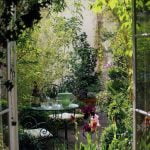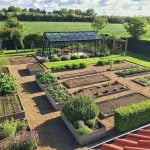Are you looking for raised bed ideas for small gardens? Raised bed gardening is a great way to maximize space and productivity in a limited garden area. In this article, we will explore the numerous benefits of raised bed gardening and provide practical tips and ideas for creating and maintaining small raised beds. From vertical gardening techniques to choosing the right materials, we will cover everything you need to know to make the most out of your small garden space.
One of the key advantages of raised bed gardening is its ability to make the most of limited space. By utilizing vertical space and intensive planting strategies, small raised beds can yield an impressive harvest while also adding visual interest to your garden. In addition, the use of raised beds can help with soil drainage and temperature control, providing a healthier environment for your plants.
In this section, we will delve into the benefits of raised bed gardening, covering topics such as vertical gardening techniques, materials comparison, and maximizing space through intensive planting strategies. Whether you are new to gardening or looking for fresh ideas for your small garden, this comprehensive guide to raised bed gardening will provide you with the inspiration and knowledge needed to create a beautiful and productive garden in any space.
Utilizing Vertical Space
When it comes to maximizing space in a small garden with raised beds, utilizing vertical space is key. Vertical gardening allows you to grow more plants in a smaller footprint, making it an ideal solution for compact gardens. Here are some techniques and ideas for using vertical space in your small raised bed garden:
1. Trellises and Arbors: Installing trellises or arbors in your raised beds can provide support for vining plants such as tomatoes, cucumbers, and beans. This not only saves ground space but also creates a visually appealing vertical element in your garden.
2. Hanging Planters: Utilize the vertical space above your raised beds by hanging planters or baskets. These can be used to grow herbs, flowers, or even small vegetables like lettuce or strawberries. Hanging planters are a great way to add more greenery without taking up valuable ground space.
3. Vertical Wall Gardens: Consider adding a vertical wall garden to the sides of your raised beds or onto nearby walls or fences. This can be achieved using pocket planters, wall-mounted containers, or even repurposed items such as pallets. Vertical wall gardens can add an element of beauty and interest to your small garden while increasing planting capacity.
By incorporating these vertical gardening techniques into your small raised bed garden, you can make the most out of limited space while still enjoying a bountiful harvest throughout the growing season.
Choosing the Right Materials
When it comes to choosing the right materials for your raised bed garden, there are several options to consider. Each material has its own set of benefits and drawbacks, so it’s important to weigh them carefully before making a decision.
Wood is a popular choice for raised bed construction due to its natural look and affordability. Cedar and redwood are commonly used because they are naturally resistant to rot and insects. However, untreated wood may deteriorate over time, so it’s crucial to use a liner or choose a more durable type of wood such as locust or cypress.
On the other hand, metal raised beds offer durability and sleek aesthetics. They can be made from galvanized steel, corten steel, or aluminum, all of which provide long-lasting performance with minimal maintenance. Metal beds also warm up faster in the spring and hold heat longer in the fall, which can extend the growing season for your plants.
Composite materials such as recycled plastic or composite lumber are another option for raised beds. They offer the natural look of wood with added durability and resistance to decay. While initial cost may be higher than wood, composite materials require little to no maintenance and can last for many years without replacement.
In comparing these options for raised bed materials, it’s essential to consider factors such as cost, longevity, maintenance requirements, and visual appeal based on your specific gardening needs and preferences.
| Material | Pros | Cons |
|---|---|---|
| Wood | Natural look, affordability | Potential decay without proper treatment |
| Metal | Durability, sleek aesthetics | Higher initial cost |
| Composite | Durability, low maintenance | Higher initial cost compared to wood |
By understanding the advantages and disadvantages of each material type in relation to your small garden’s unique conditions and requirements will help you make an informed decision when selecting the best option for your raised bed garden project.
Maximizing Space
Square Foot Gardening
One of the most effective ways to maximize space in a small raised bed garden is through square foot gardening. This method involves dividing the raised bed into square foot sections, allowing for precise and efficient planting of various fruits, vegetables, and herbs. By carefully planning and organizing the layout of your plants within each square foot, you can achieve high yields in a limited space.
Interplanting and Succession Planting
Another strategy for intensive planting in small raised beds is interplanting and succession planting. Interplanting involves growing two or more different types of crops together in the same area, utilizing vertical space as well as the space around the base of taller plants. Succession planting involves planting new crops immediately after harvesting the previous ones, ensuring a continuous harvest throughout the growing season.
Companion Planting
Companion planting is a valuable technique for small raised bed gardens as it promotes beneficial relationships between different plant species, such as pest control, pollination, and maximizing available nutrients. By carefully selecting complementary plants to grow together in close proximity, you can optimize every inch of your small raised bed garden.
By implementing these intensive planting strategies, you can make the most out of your small raised bed garden, ensuring a bountiful harvest and aesthetically pleasing design. Whether you are growing vegetables, herbs, or flowers, these methods will help you create a thriving and productive garden despite limited space.
Creative Design Ideas
When it comes to small gardens, the design of raised beds plays a crucial role in maximizing space and creating an attractive outdoor area. With the right creative design ideas, you can not only make your small garden look stylish but also ensure that it is functional and productive. Here are some innovative raised bed ideas for small gardens to inspire you.
Tiered Raised Beds
Tiered raised beds are an excellent way to add visual interest to your small garden while also making the most of limited space. By stacking multiple levels of planting areas, you can create a dynamic and eye-catching design. Consider using different materials for each tier, such as wood, stone, or metal, to add texture and personality to your garden.
Curved Raised Beds
Instead of sticking to traditional rectangular or square shapes, think about incorporating curved raised beds into your small garden design. Curved beds not only soften the overall look of the garden but also allow for better flow and movement. You can use flexible materials like cedar boards or composite lumber to easily create smooth and organic curves that complement the natural surroundings.
Colorful Designs
Add a pop of color to your small garden by painting or staining your raised beds in vibrant hues. Opt for bold shades that complement your outdoor decor or go for a more subtle approach with pastel tones. Additionally, consider selecting colorful plants with varying foliage and flower colors to further enhance the visual appeal of your raised bed garden.
By implementing these creative raised bed ideas for small gardens, you can transform your outdoor space into a stunning oasis that is both practical and aesthetically pleasing. Whether you choose tiered designs, curved layouts, or colorful options, there are endless possibilities for elevating the style and functionality of your small garden with well-planned raised beds.
Seasonal Planting Guide
When maintaining a small garden, it’s essential to make the most out of the limited space available. One way to achieve this is by using raised bed ideas for small gardens, which offer several benefits, including extended growing seasons and increased yields. With proper planning and execution, you can enjoy a year-round harvest in your small raised beds.
To ensure a continuous supply of fresh produce, consider planting a variety of crops with different growing seasons. For example, you can start with cool-season vegetables like lettuces, spinach, and radishes in the early spring before transitioning to warm-season crops such as tomatoes, peppers, and cucumbers during the summer months. As the temperatures begin to cool in the fall, switch back to cool-season options like kale, carrots, and beets.
Additionally, utilizing season extenders can help prolong your growing season. Options such as row covers, cold frames, and hoop houses create a microclimate that protects plants from frost and allows you to continue growing well into the winter months. By incorporating these tools into your small raised bed gardening efforts, you can maximize your yield potential and enjoy fresh produce throughout the year.
In addition to choosing the right plants and utilizing season extenders, it’s crucial to pay attention to soil health and fertility. Implementing crop rotation and interplanting techniques will help prevent nutrient depletion while promoting overall garden health. By following these seasonal planting tips for small raised beds, you can ensure a bountiful harvest regardless of the size of your garden.
Problem Solving
One of the common challenges in small raised bed gardening is the limited space for plants to thrive. However, there are several creative solutions to address this issue and make the most out of your small garden raised beds. Here are some raised bed ideas for small gardens to help you overcome common challenges:
1. Companion Planting: Utilize companion planting techniques to maximize space and create a healthier growing environment for your plants. For example, planting mutually beneficial crops together can help deter pests, improve soil fertility, and make the most of your limited space.
2. Vertical Planting: Incorporate vertical gardening techniques by utilizing trellises, stakes, or hanging planters to grow vining or climbing plants such as tomatoes, cucumbers, or beans. This allows you to take advantage of vertical space and keep the ground area free for other crops.
3. Succession Planting: Implement succession planting strategies to ensure a continuous harvest throughout the growing season. Once one crop is harvested, immediately replant the space with another crop that can mature before the end of the season. This method helps maximize productivity in small raised beds.
By implementing these raised bed ideas for small gardens, you can overcome common challenges such as limited space and maximize the potential of your small garden raised beds. With proper planning and creative solutions, you can achieve a bountiful harvest in even the smallest of spaces.
DIY Raised Bed Projects
In conclusion, raised bed gardening offers a multitude of benefits for those with limited space, making it an ideal solution for small gardens. By utilizing vertical gardening techniques, choosing the right materials, and implementing intensive planting strategies, gardeners can maximize their space and productivity. Additionally, incorporating stylish and functional raised bed designs adds aesthetic appeal to the garden while addressing common challenges such as drainage and soil quality.
When considering raised bed ideas for small gardens, it is important to keep in mind the seasonal planting guide to ensure a year-round harvest. With proper planning and execution, small garden raised beds can provide an abundance of fresh produce and flowers throughout the seasons. Moreover, DIY enthusiasts can take advantage of step-by-step tutorials for building and installing their own small garden raised beds using various materials such as wood, metal, or composites.
Frequently Asked Questions
What Is the Cheapest Way to Make Raised Garden Beds?
The cheapest way to make raised garden beds is by using materials that are readily available, such as untreated wood, concrete blocks, or even recycled materials like old tires or pallets. Choosing cost-effective options for soil and compost can also help keep the overall expense down.
What Do You Put in the Bottom of a Raised Garden Bed?
When it comes to filling the bottom of a raised garden bed, it’s important to prioritize drainage and aeration. This can be achieved by using a layer of gravel or rocks at the bottom of the bed. On top of this, adding a barrier such as landscape fabric can help prevent weeds from growing up into the bed.
What Is the Best Layout for a Raised Bed Vegetable Garden?
The best layout for a raised bed vegetable garden is one that takes into account the needs of different plants in terms of sunlight, spacing, and water requirements. Typically, a layout with taller plants positioned in the north or west side of the bed can prevent them from shading smaller plants.
Additionally, leaving enough space between rows for easy access and maintenance is crucial for an efficient and productive vegetable garden.

Welcome to my gardening blog! I am passionate about plants and enjoy sharing my knowledge and experiences with others. In this blog, I will write about everything related to gardening, from tips on how to get started to updates on my own garden projects.





